Rethinking Americana
Author:Abigail StoneOliver M. Furth shoulders the task of designing an American home for a family that reflects their diverse experiences and multicultural influences

Photos by Roger Davies.
For Oliver M. Furth Design and Decoration, each home is a blank canvas, each client a muse, each project a ticket to that adventurous ride between instinct and intellect that is the creative process. “Sometimes there are things that just feel right and sometimes you need to do the work to make sense of those emotive responses,” he shares. “Function is the parameter— What does this room need? What does the client need?—imagination and curiosity are the fuel.” The result of his process is a portfolio of unique homes featured in his first monograph, OP! Optimistic Interiors, that express his joy for life and for the decorative arts.
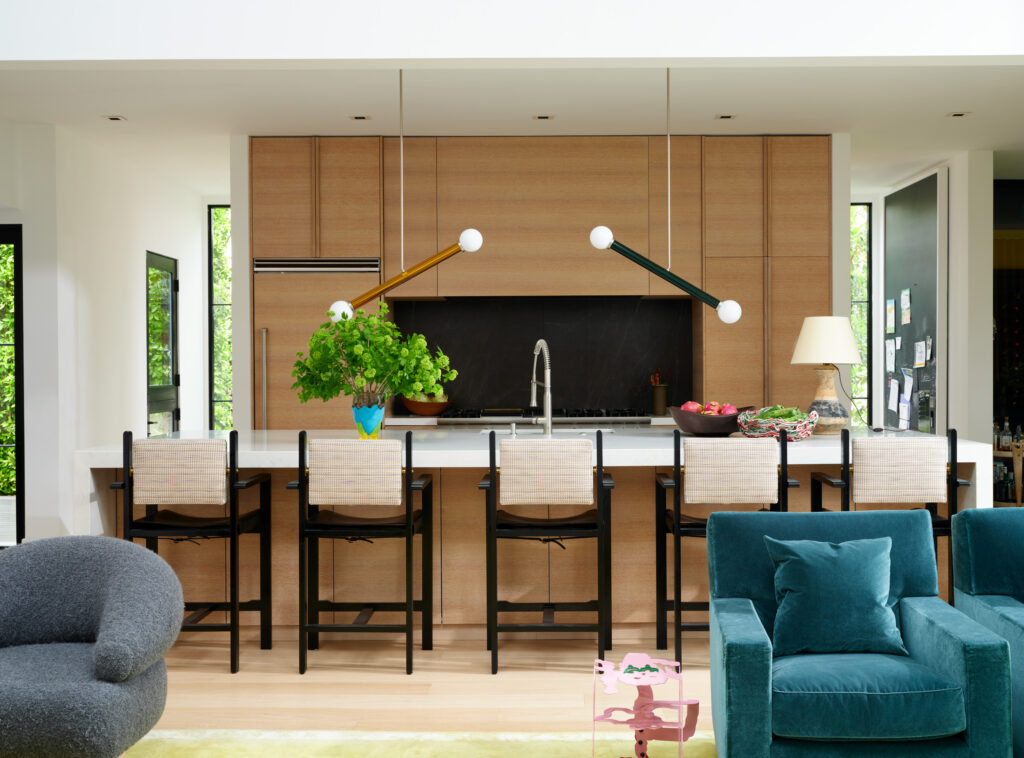
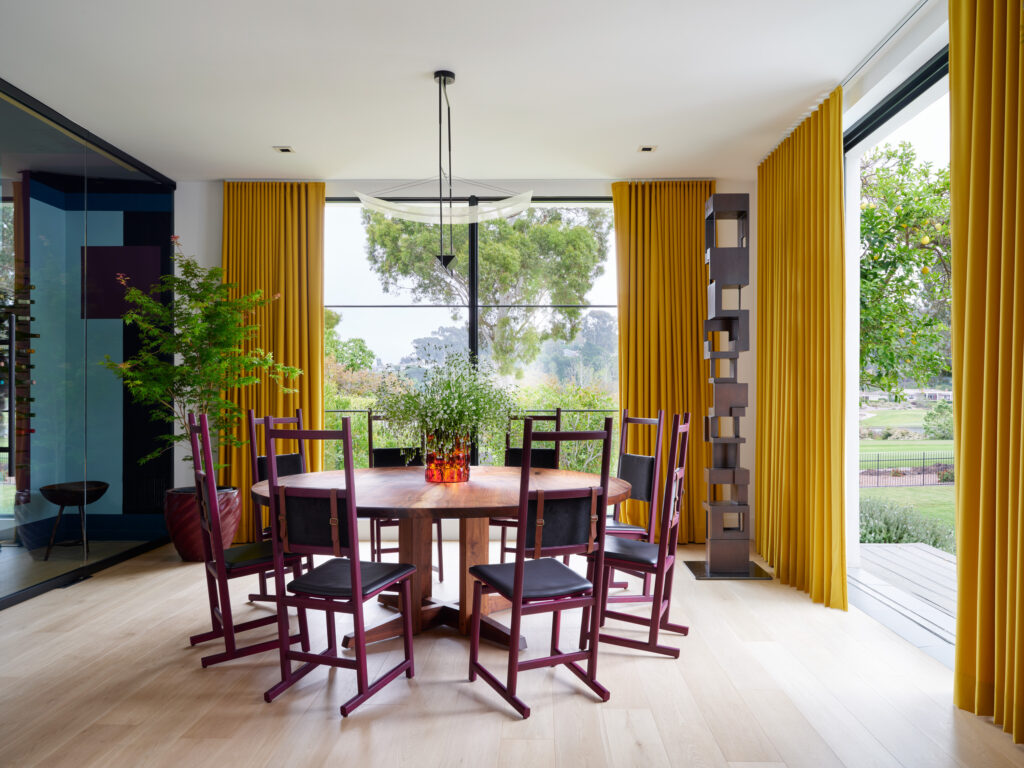
Included in the book is this unique home in Laguna that Furth designed for a young Asian American family who had spent many years living abroad in London, Tokyo and Madrid. “They were ready to put down roots and I was ready to help ground them,” he says. “Because they had lived all over the world, we wanted to create a house for them that represented the breadth of their experiences.” But they also expressed they wanted an “American” house. What did that mean? How would he conjure up a house that felt “American” without resorting to pastiche or caricature? The key lay in discovering a word or phrase that would unite these opposing thoughts.
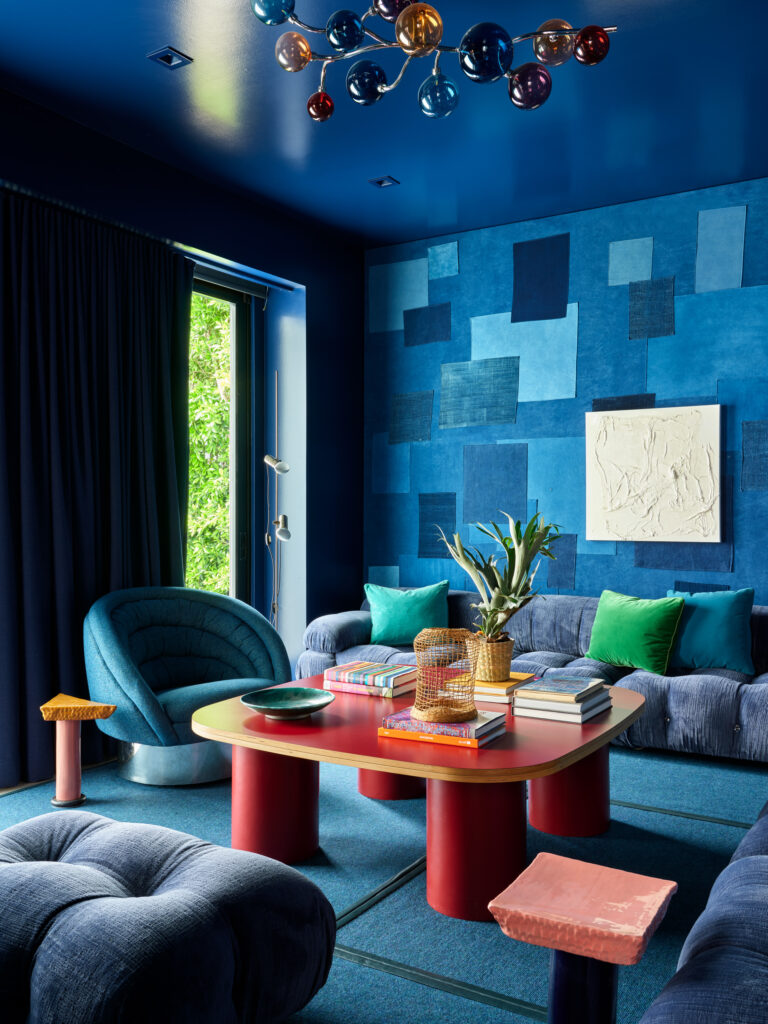
The through line that ended up driving the project arose as the firm began work on what would become the home’s media room. “The idea was a modern tatami room,” Furth notes, citing his initial inspiration. The floor coverings, which form the centerpiece of a traditional Japanese home, are woven from pale rush grasses bound with a black fabric border. Here they’ve been reimagined in indigo, echoed in the Mediterranean blue of the room’s ceiling and the variegated squares that cover its walls. “So the initial idea arose very organically,” says Furth. From there it was a matter of reverse engineering to discover how it related to American decorating.
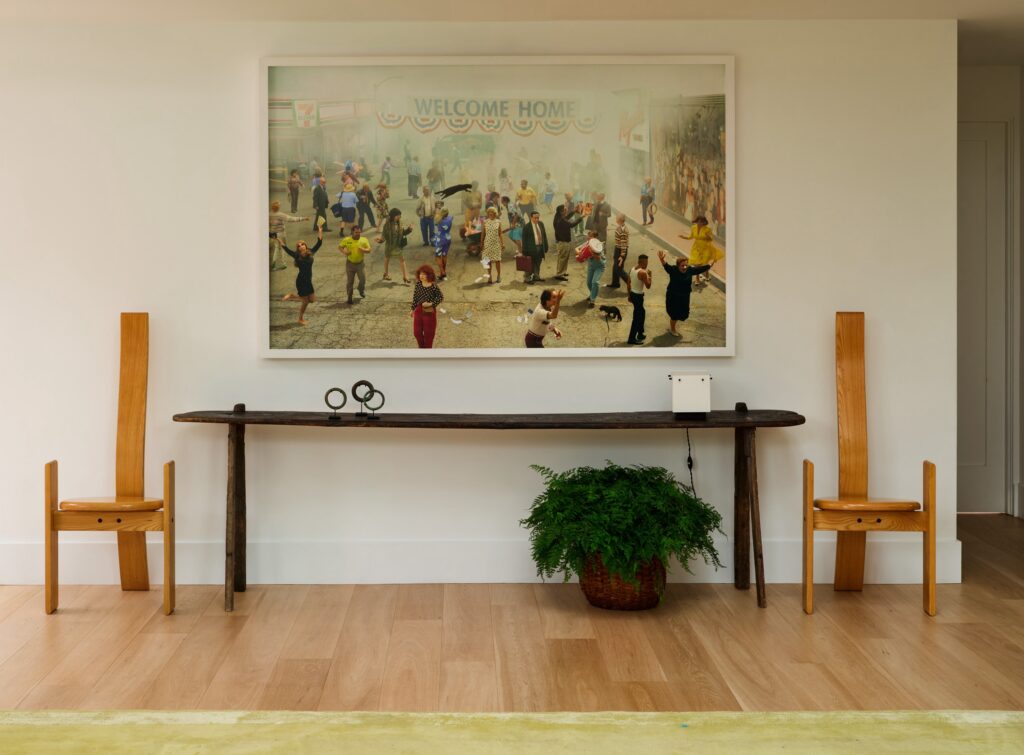
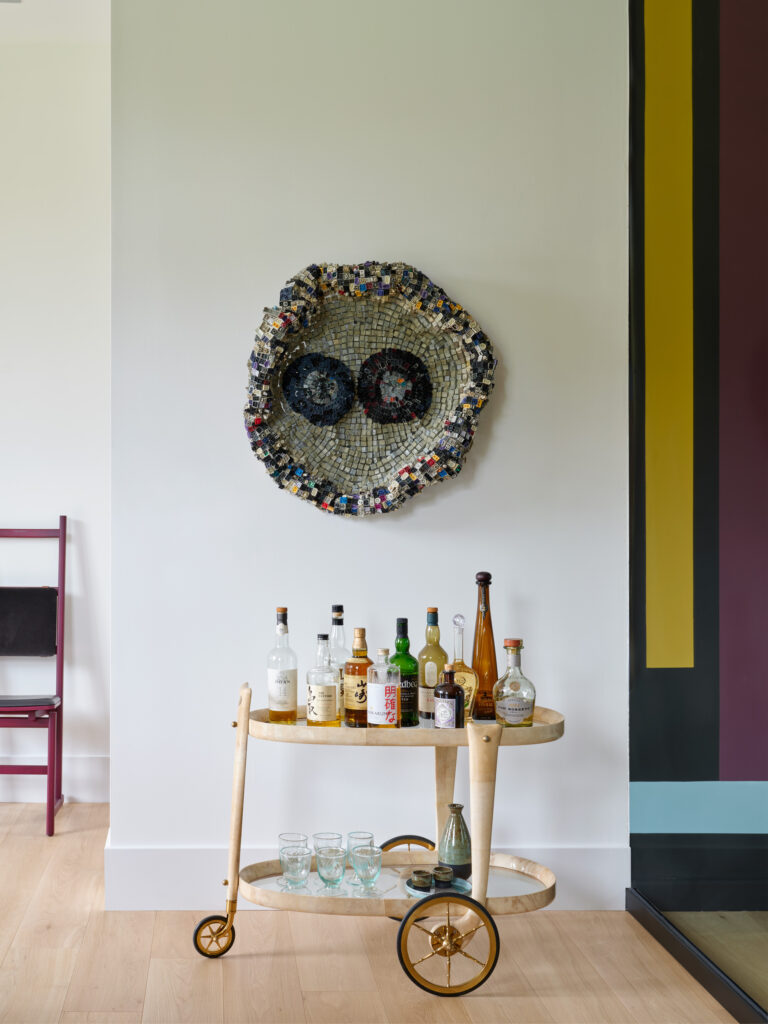
“The idea of patchwork gathers up the blending of cultures, which in and of itself is very American. And then it also brings in this idea of craft, which, although it has roots all over the world, is also very American. And it takes into account this idea of ingenuity—also very American—and unpretentiousness and handmade and warmth, which is something we were very interested in bringing into this very new, very large and very cold house,” says Furth, explaining how a single thought morphs and evolves into a theme that becomes a touchstone that he can share with his team. “So that became the thing that linked together all of these various ideas and influences that we wanted to weave into the design of this home.”
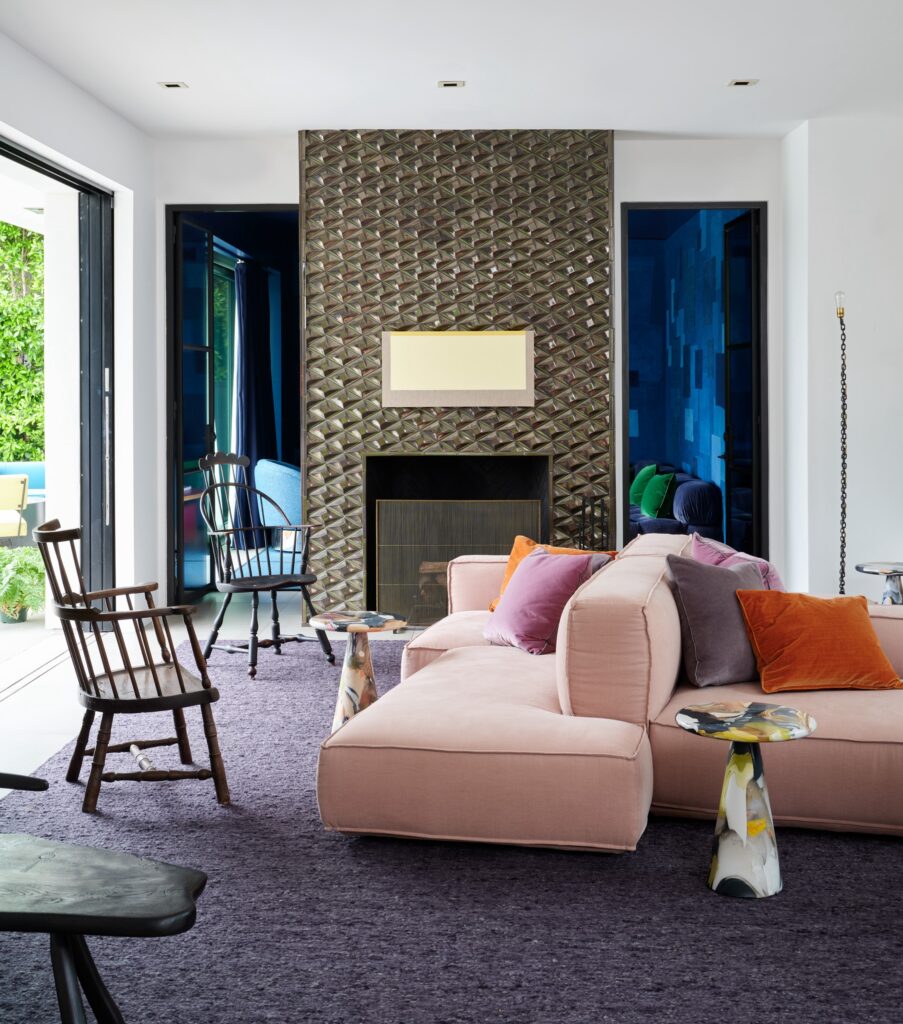

These various permutations enabled the firm to do what it does best: By employing custom designs by artisans and craftspeople, alongside vintage pieces, singular art and iconic works, they explore the endless interplay between color, pattern, texture, shape and proportion, puzzling together a singular vision that reverberates with their client. “It may feel random but there’s connective tissue between these choices,” Furth says.

There are literal interpretations of patchwork, of course—witness the scullery’s handmade tile floor, the irreverent grid of textural woven wallpaper on the dressing room’s ceiling, the 19th-century Pennsylvanian quilts in the family room and the vintage textile that covers the four- poster in the primary bedroom. But the home also reflects the theme’s nuances. There are the rainbow of hues that skip through each space. “These clients embraced color wholeheartedly,” Furth proclaims. “They are a happy family and requested joyful tones throughout.”
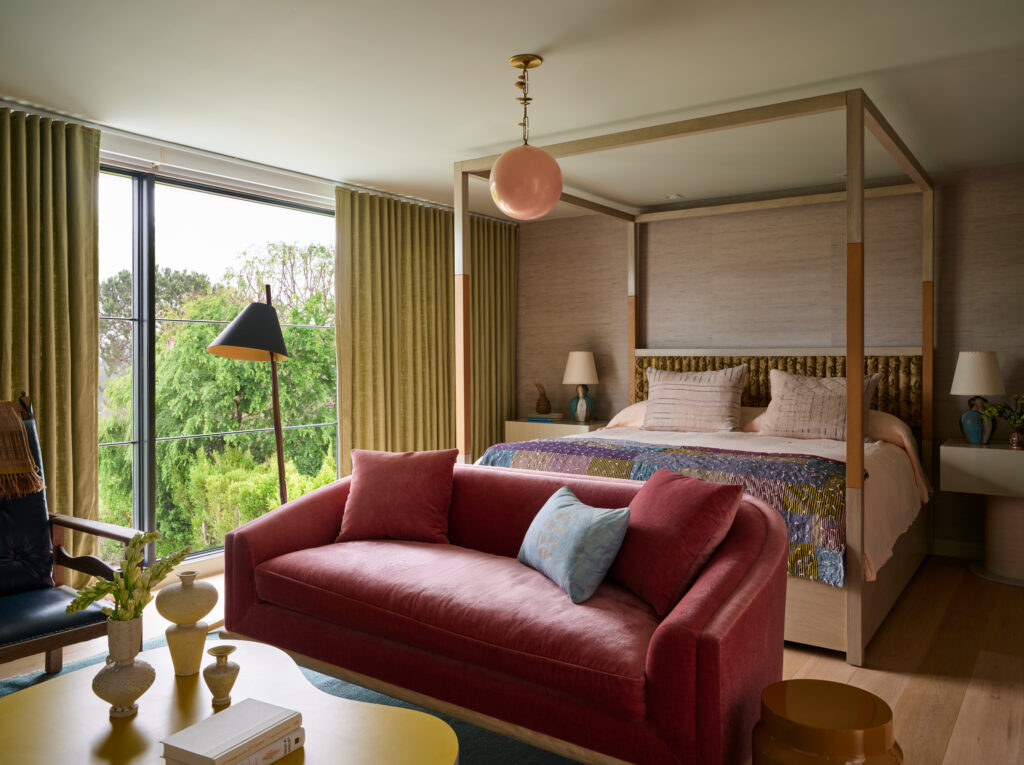
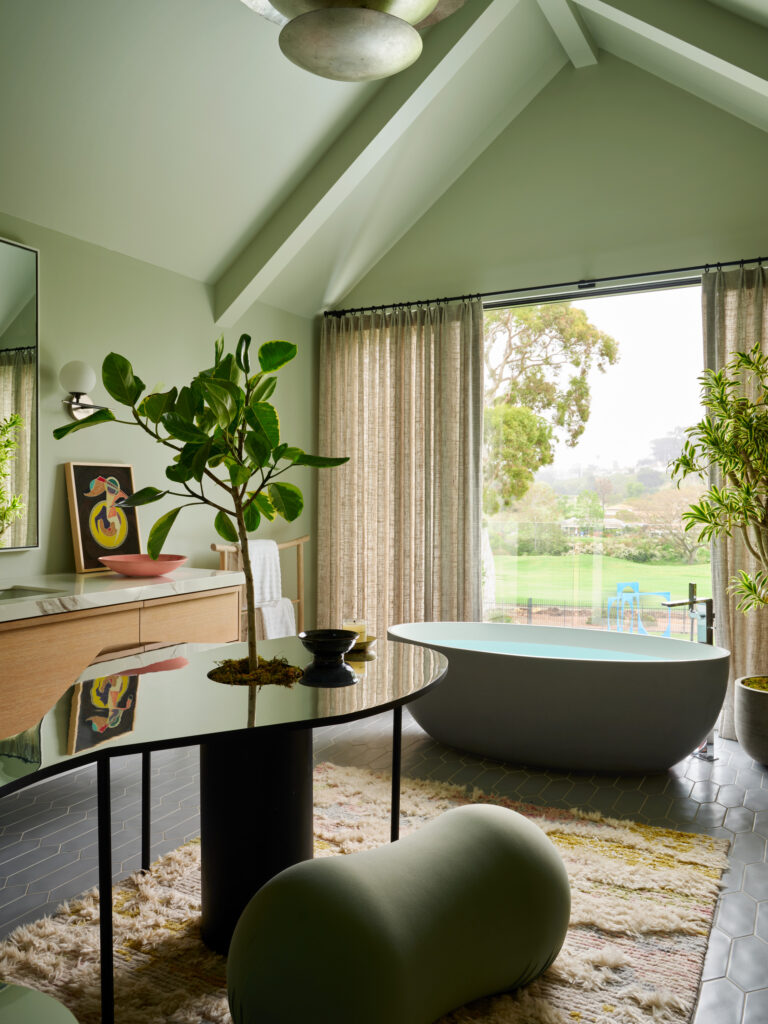
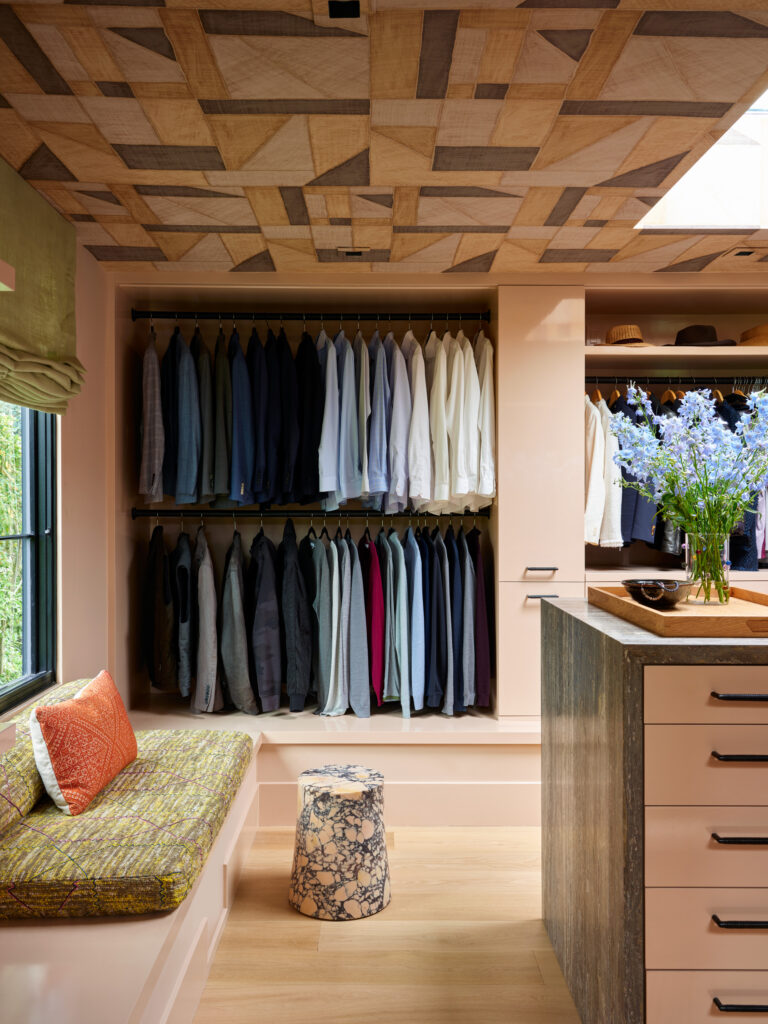
There are the blues and teals in the media room, which fold into the chairs in the family room before finding their reverberation in the scullery’s cabinetry, tiles and sconces. There are splashes of pink and red—the pink sculptural side table in the family room, the merlot Shaker-style chairs in the dining room, the living room’s dusty pink modular sofa, the custom red table in that media room— and of yellow, reminiscent of rich saffron robes worn by Buddhist monks and Furth’s ebullient disposition. There is also the punk yellow of the scullery’s faucet, the family room’s sherbet yellow carpet, the dining room’s yellow wool sateen drapery, the delicate chiffon cake yellow of the chairs on the outdoor dining pavilion and the deep Meyer lemon found in the bedroom’s coffee table and stool. And there are pieces created by makers from across the country and across the globe, from Korea and Zimbabwe to Italy and France, from the 17th century to the present day.

“We drew upon American concepts and found connections between cultures, embracing concepts without cliché,” Furth states. “The end result is an American house that respects and honors the heritage of the people who live there.” It’s a true melting pot of ideas, made more potent by its exuberant mix and the unabashed joy created by juxtaposition. An American house indeed.





